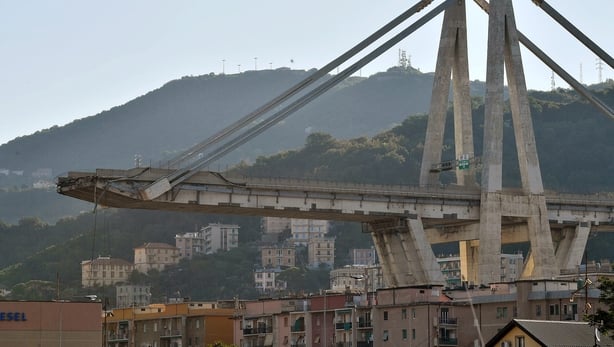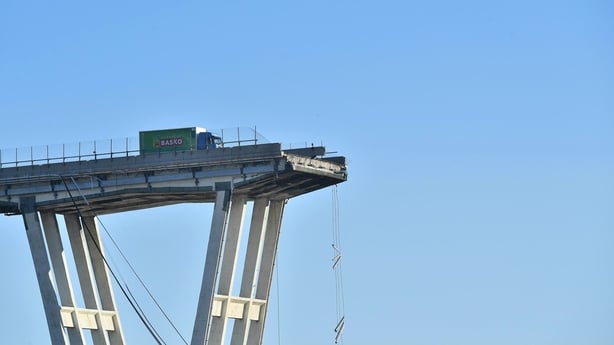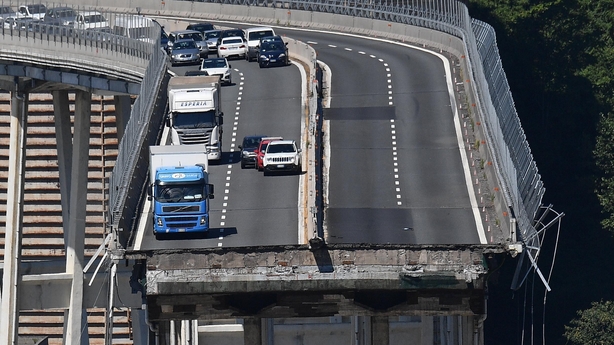The Morandi motorway bridge in Genoa, a portion of which collapsed on Tuesday killing at least 39 people, has been described as a "tragedy waiting to happen" by engineering experts.
The bridge, which was built between 1963 and 1967, had been beset with structural problems since its construction and had required expensive maintenance work in the past.
The bridge was undergoing maintenance work at the time of Tuesday's accident and its demolition had been studied as far back as 2009.
Engineers are now warning that much of Italy's post-War infrastructure, built using similar techniques to that employed in the construction of the Morandi bridge, is in urgent need of renovation.

The technology of pre-stressed reinforced concrete used in the construction of the bridge was the hallmark of its designer, the celebrated Italian engineer Riccardo Morandi, who died in 1989.
Morandi had used a similar technique for other works, including the longer and similarly problematic General Rafael Urdaneta Bridge in Venezuela, completed in 1962.
On Tuesday, a specialist engineering website called "Ingegneri.info" wrote that the bridge had long presented "structural doubts" and labelled it "an accident waiting to happen."
Antonio Brencich, professor of reinforced concrete construction at the University of Genoa and a longstanding critic of the bridge, highlighted the constant maintenance the bridge needed.
"It was affected by extremely serious corrosion problems linked to the technology that was used (in construction). Morandi wanted to use a technology that he had patented that was no longer used afterwards and that showed itself to be a failure," said Brencich to Radio Capitale.

Economic news agency Radiocor reported this week that Italy's motorway agency had recently launched a €20 million tender for work on the viaduct.
The tender provided for a strengthening of the bridge's pier cables, including those of pier nine, the one that collapsed on Tuesday.
The incident - the deadliest of its kind in Europe since 2001 - is the latest in a string of bridge collapses in Italy, a country prone to damage from seismic activity but where infrastructure generally is showing the effects of a faltering economy.
"Fifty years ago, we had unlimited confidence in reinforced concrete, we thought it was eternal, but now we know that it only lasted a few decades," Diego Zoppi, former president of the Genoa branch of the order of architects, told reporters on Tuesday.
"The Italy built in the 1950s and 1960s is in urgent need of renovation. The risk of collapses is underestimated, the works built at that time are coming to an age when they are at risk."

Italian President Sergio Mattarella said a "catastrophe" had hit Genoa and the whole of Italy, as attention turned to what might have caused the collapse and who might be ultimately responsible.
"Italians have the right to modern and efficient infrastructure that accompanies them safely through their everyday lives," Mr Mattarella said in a statement.
In the wake of the tragedy, Prime Minister Giuseppe Conte said that "all infrastructure" across the country needed to be double-checked.

